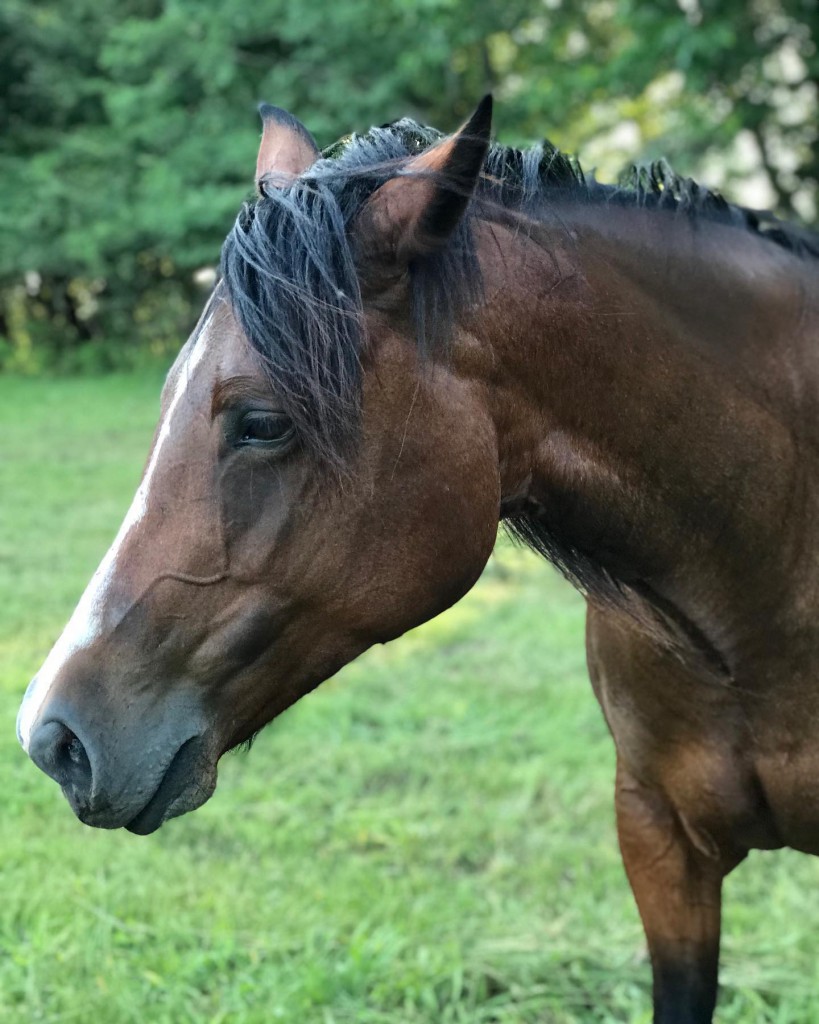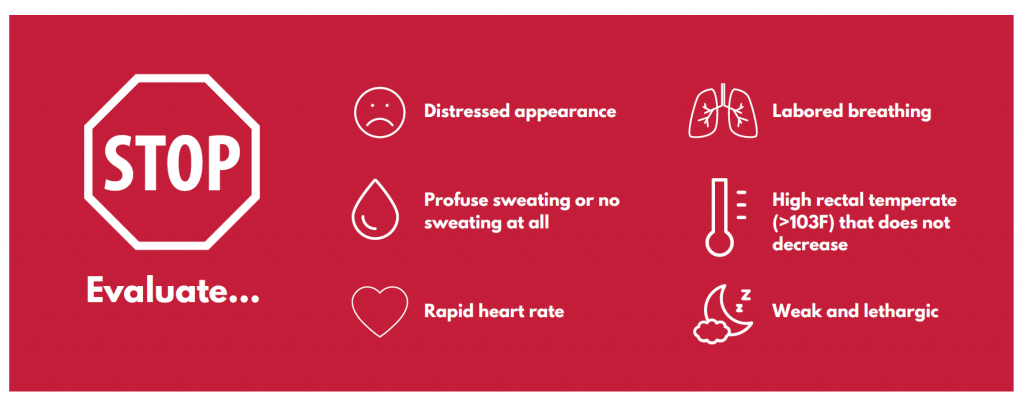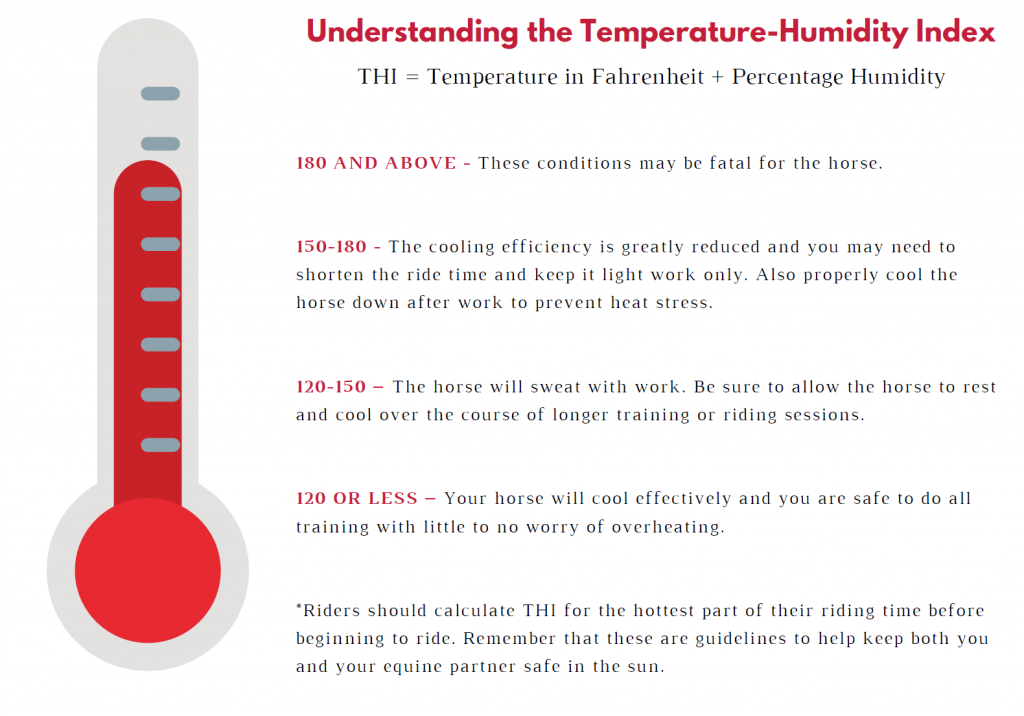You’re dripping sweat from cleaning stalls and it’s only 8:30 a.m. Welcome to summertime in Georgia. As the sun gets higher, so does the temperature and we all know out horses begin hunting the trees and shade. Horse will often adjust on their own to the heat and rising temperatures, but owners still need to recognize and take precautions to prevent horses from overheating while working or at rest.

Any horse is susceptible to heat stress, but horses that are out of shape or overweight are at a higher risk. Other factors that contribute to heat stress and overheating are: high ambient temperatures, high humidity, lack of access to water, traveling long distances, poor conditioning. Horses that are suffering from mild heat stress may not show symptoms. Some signs to be area of are:
- Distressed appearance
- Profuse seating or no sweating at all
- Rapid heart rate
- Labored breathing
- High rectal temperature that doesn’t decrease
- Weak and lethargic
- Rectal temperatures above 103 F

PROVIDE FRESH WATER: Horses sweat to cool down rapidly. The sweat evaporates and the heat is removed from the body to decrease the core temperature. As horses sweat water is lost from the body and must be replaced. A horse that is working hard in a hot environment can lose 2 to 4 gallons of sweat per hour. The number one thing to prevent heat stress is to provide fresh clean water at all times. Also increase water consumption by having salt blocks or adding salt supplements to increase thirst. Speak with you veterinarian about adding electrolytes into your program if you have a horse that is in heavy work during the summer months. You can add electrolytes to your feed or to the water, but some horses prefer to have plain water as well to drink.
ADJUST WORK LOAD: Horses are at a higher risk for heat stress when exerting energy during high temperatures. When exercising your horse, consider the temperature-humidity index (THI). For example if it is 78 degrees Fahrenheit and the relative humidity is 80% then the THI is 158. Add the temperature with the humidity and that is the THI. Any THI above 150, horses will have difficulty cooling off and will require you to properly cool your horse down after. To properly cool hour horse, make sure you are walking for the last 10-15 minutes of your ride. Once you have offered your horse water after untacking, rinse them off starting at the feet and work your way up. Rinsing and scraping the excess water helps cool them down and gets the dirt and sweat off of them. Working horses over a THI of 180 is unsafe and dangerous to the health of you and the animal.

STAY COOL: Provide turnout during cooler times of the day (early morning, late at night or overnight). Provide shade like trees, buildings or even shade cloths to relieve the heat from the sun. Watch out for sunburn as well on light skinned horses. Use fans in your barn to increase airflow. Be sure to keep cords away from mischievous horses. Consider clipping horses with long hair coats, like horses with Cushing’s, to increase cooling. Don’t transport horses during the hottest part of the day, Trailers should be well ventilated and never park in direct sunlight and leave the horses on the trailer for extended periods. Watch your horse for anhidrosis (the inability to sweat). Consult with your vet if your horse doesn’t sweat properly.
If your horse does overheat, you can help by:
- Removing all tack and find a shaded area
- Cold hosing by starting at the feet and legs and moving up to the major vein areas Jugular veins, cephalic veins and femoral veins will provide maximum cooling effect.
- Use a fan to increase evaporative cooling
- Allow the horse access to fresh water of ambient temperature (not cold)
- Call your vet if rectal temperatures do not drop below 103 degrees Fahrenheit